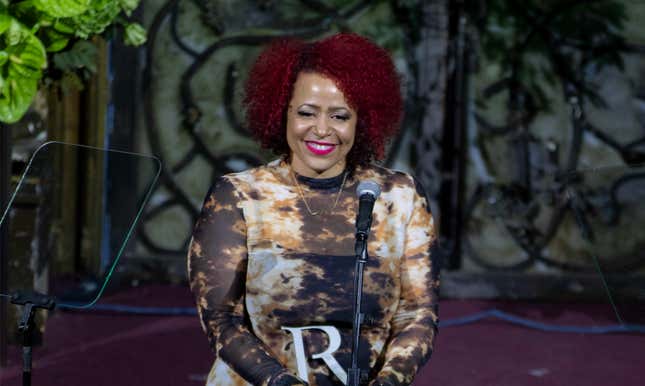
Some years, when we say an entity (person, persons of note, or not) embodies Umoja, or unity, the first principle of Kwanzaa, it is because their actions bring together the larger black community (see Tarana Burke in 2017). Other times, it’s more about a personal manifestation of unity (see the workers of KFC in 2018). This year, it’s a bit of both.
But first, for those who are just starting to learn about the Blackest Holiday of Them All (or who may have forgotten), Umoja or unity, is celebrated on Dec. 26, the first day of Kwanzaa. To practice Umoja is to strive for and to maintain unity in the family, community, nation, and race.
This year, Nikole Hannah-Jones is the embodiment of unity, especially for her behemoth enterprise, The 1619 Project, which ran in the New York Times this August. The 1619 Project commemorated the 400th anniversary of the beginning of American chattel slavery, where, to paraphrase Malcolm X, “Plymouth Rock (in this case Point Comfort, Va.) landed on us.”
Hannah-Jones, who has spent her entire career as an investigative journalist reporting mostly on educational inequity in the “paper of record,” brought together the brightest black thinkers, academics, journalists and writers around the subject of American enslavement—hitting it from every angle. She sought to reframe the narrative of slavery by centering African Americans in this most shameful national bedrock, its repercussions which are still being felt to this very day.
“I had been thinking about this and reading obsessively for 25 years about all the inequalities in American life that can be traced back to slavery,” said Hannah-Jones, who sought to counter the oft-repeated point “but slavery happened so long ago!”
The beauty of the 1619 Project is that it has legs. For one, you know if certain white folks are up in arms about it, it’s golden. For another, the Project has been expanded into school curriculums so that we all know not only about the Mayflower but the White Lion as well, which brought the first 20 enslaved Africans to these shores four centuries ago. There are also plans for a book, according to Hannah-Jones.
Hannah-Jones, a MacArthur “Genius” award recipient, is also the founder of the Ida B. Wells Society for Investigative Reporting, which seeks to train and increase investigative journalists of color during a time when in-depth, well-researched stories on and for our communities are essential.
There is such a thing as unity of consciousness, not only for us but for those we live in this country with; for our children, for all children, even. It is time that the tale be told—not his story, but our story. Even 400 years later, it is right on time.
Editor’s Note: For each day of Kwanzaa, we will be highlighting one person from the community who exemplifies the principle of the day. Who do you think exemplified Umoja or unity this year? Sound off in the comments!
Those practicing Kwanzaa greet each other with the words, “Habari Gani?!” roughly translated as “What’s the good news?” to which participants respond with the principle of the day, in this case, “Umoja!”
Happy Kwanzaa!

